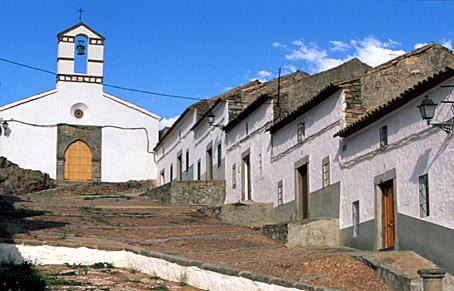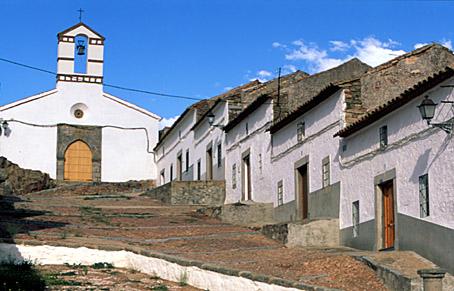Pedroche

Located in Los Pedroches Valley, at the heart of the Cordoba Sierra, this village consists of holm oak pastures devoted to extensive cattle farming (pigs and sheep), the AREA"s main economic activity.
The village itself, standing atop a low hill, is made up of steep, narrow, well-coordinated streets which create a most picturesque effect, the highlight of which is the tower of The Saviour Church, but the overriding feature of all Pedroche"s buildings is the granite used in their construction, contrasting sharply with the limestone, a common characteristic among the villages of this region.
History
According to F. J. Simonet, the name Pedroche comes from the Latin Petrosus, derived from Petra, meaning stony, which is an accurate description of the village"s rocky terrain.If we accept Pliny"s view that the village was founded around 300 B. C., Pedroche must have originally been a Tartessian settlement which was incorporated into the Turdulan town of Beturia upon the arrival of the Turdetan civilisation.
The first Moslem chronicler to mention Pedroche was Idrisi, in the 12th century. In the 13th century, Yagut referred to Pedroche as the capital of the cora (region) of Fahs al Ballut.
Pedroche has always been an important wine-producing village, as witnessed by the fact that in 1478 it was the village which had to pay the largest wine levy. Throughout the early Middle Ages, it was home to one of the Kingdom of Cordoba"s three archdeaconates.
Eminent citizens
Ahmed al-Bitruyi, scholar and writer.
Al-Bitruyi, a disciple of Averroes, mathematician and astronomer.
Abu Hafs Umar al-Ballutí, conqueror.
Brother Juan de los Barrios, Archbishop of Santa Fe de Bogota.
Pedro Moya de Contreras, Archbishop of Mexico.

- Max 14
- Min 8
- Max 57
- Min 46
- °C
- °F







